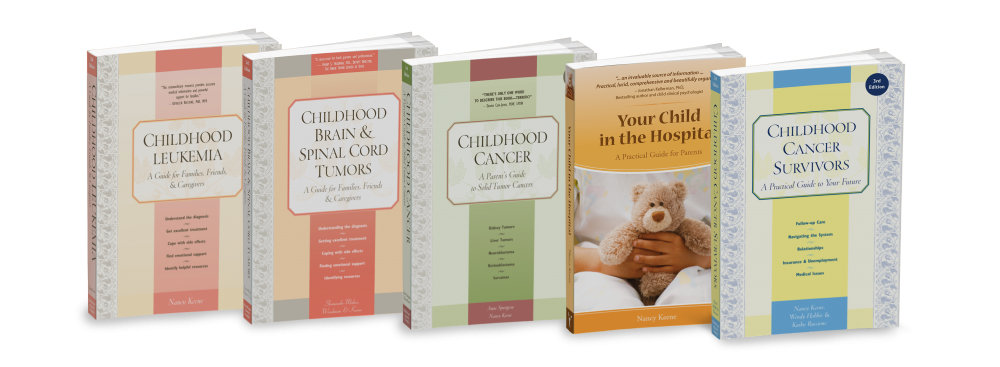What is neuroblastoma?
“Neuroblastoma is a type of childhood cancer that most commonly originates in the adrenal glands but can also develop in the nerve tissues in the neck, chest, abdomen or pelvis. It is the most common extracranial solid tumor cancer in childhood and the most common cancer in infancy. Neuroblastoma is divided into three risk categories: low, intermediate and high risk.”
Source: Alex’s Lemonade Stand Foundation
Who gets neuroblastoma?
“Neuroblastoma is the most common cancer diagnosed in the first year of life. Boys are diagnosed more often than girls, and there is a slightly higher incidence among White children than among Black children, although Black children are more likely to be diagnosed with high-risk disease. More than half of all neuroblastomas are diagnosed in children ages 2 years or younger, 89 percent are diagnosed before age 5, and 98 percent are diagnosed by age 10.”
Source: Alex’s Lemonade Stand Foundation
How does someone get diagnosed with neuroblastoma?
“ Many tests are necessary to confirm a diagnosis of neuroblastoma because symptoms of this disease can mimic other illnesses, including other cancers. A pediatric oncologist will perform a thorough physical examination and order a complete blood count (CBC). Common tests include: a meta-iodobenzylguanidine (mIBG) scan, a lymph node biopsy or MRI, an abdomen and pelvis MRI, a computerized tomography (CT) scan, and chest X-rays.”
Source: Alex’s Lemonade Stand Foundation
What are some signs and symptoms?
“Children with neuroblastoma often experience a number of different signs and symptoms, depending largely on the location of the primary tumor and whether the disease has spread (metastasized) to other locations in the body. Symptoms may include a lump or mass in the abdomen, loss of appetite, weight loss, diarrhea, and vomiting. In the bones symptoms may include limping, difficulty standing, or pain in the bones. The eyes may show protrusions or dark circles, and the spinal cord can cause back pain, weakness, and difficulty urinating. In some cases, a spread in the bone marrow may even cause paleness or tiny red dots under the skin (petechiae). Chronic coughing and difficulty breathing are also symptoms in the chest.”
Source: Alex’s Lemonade Stand Foundation
What does each stage mean?
“Stage 1 – The tumor is limited to the site of origin and can be completely removed (resected), with or without microscopic residual disease (extremely small amounts that are visible only with the aid of a microscope). Lymph nodes on both sides of the abdomen or chest are negative, which means that no cancer is found when the lymph node tissue is examined under a microscope. Stage 2A – The tumor affects only one side of the body and is limited to the site of origin; the cancer cannot be completely removed (visible amounts of disease remains); and lymph nodes on both sides of the body are negative microscopically. Stage 2B – The tumor affects only one side of the body and is limited to the site of origin; complete removal may or may not be possible; lymph nodes on the same side of the body near the tumor are positive (contain neuroblastoma cells); and lymph nodes on the opposite side of the body are negative microscopically. Stage 3 – The tumor has grown across the midline and cannot be easily removed; regional lymph nodes may or may not be positive; the tumor affects only one side of the body with lymph node involvement on the opposite side of the body; or the tumor begins in the midline with lymph node or tumor involvement on both sides of the body. Stage 4 – The tumor has spread to distant lymph nodes, bone, bone marrow, liver, and/or other organs (except as defined for stage 4S). Stage 4S – This stage includes only infants younger than 1 year of age. The tumor is confined to the site of origin described in stages 1 or 2, with spread limited to the liver, skin, and/or bone marrow.”
Source: Alex’s Lemonade Stand Foundation
How common is neuroblastoma?
“Neuroblastoma is the second most common solid tumor in children (brain tumors are the most common). Each year more than 800 children are diagnosed with neuroblastoma in North America. In the United States, that’s 13 children a day, 91 children a week and 4,760 children a year who face a brain tumor diagnosis.”
Source: Alex’s Lemonade Stand Foundation
What causes neuroblastoma?
“Most neuroblastoma tumors arise spontaneously, and there is no known environmental cause. For reasons that are not understood, sympathetic nerve cells that are at the very beginning of their growth cycle sometimes begin to divide rapidly and form tumors, instead of maturing normally.”
Source: Alex’s Lemonade Stand Foundation
Is it treatable/curable?
“The cancer cells must be killed with chemotherapy drugs and radiation, removed with surgery, or encouraged to mature into normal nerve cells with help from drugs called retinoids. After diagnosis and staging, the pediatric oncologist will discuss the best-known treatment or a clinical trial based on a child’s risk category. Low risk. Children with low-risk disease do not require aggressive treatment. They usually have surgery or biopsy, followed by observation. Intermediate risk. Children with intermediate-risk disease generally require surgery and 12 to 24 weeks of chemotherapy. Radiation therapy is occasionally necessary. High risk. Children with high-risk neuroblastoma need aggressive treatment, which usually lasts 10 to 12 months and is divided into three phases: an induction phase of chemotherapy and surgery, a consolidation phase with peripheral stem cell transplantation and radiation, and a maintenance phase that includes 6 months of isotretinoin and immunotherapy. The goal of treatment is to achieve a complete remission by killing all cancer cells as quickly as possible. Complete remission occurs when all signs and symptoms of neuroblastoma disappear and abnormal cells are no longer found by any standard evaluation (MRI/CT scan, bone scan, bone marrow aspiration, or biopsy).”
Source: Alex’s Lemonade Stand Foundation
What is the survival-rate for neuroblastoma?
“The five-year survival rates vary depending on the level of risk. Children in the low-risk group has a 5-year survival rate of more than 95%. The high-risk group has a survival rate ranging from 90% to 95%, and the rate for children in the low-risk group is approximately 50%. Besides the tumor type, survival depends on the age of child at diagnosis, the location of the tumor and other factors.”
Source: Neuroblastoma survival rates by risk group (Cancer.et)
What is the likelihood of relapse?
“The likelihood of a relapse in neuroblastoma depends on a child’s risk level. Low risk and intermediate risk tumors may regrow after surgery or chemotherapy, but these children are typically cured with a repeat of standard treatment. High risk neuroblastoma is more complicated. About 10% of high risk cases do not respond to chemotherapy. For about 40-50% of high-risk cases the initial disease will go away, but eventually relapses during or after treatment.”
Source: Neuroblastoma in children in treatment (chop.edu)
Did Alex have neuroblastoma?
“Yes, our founder, Alex Scott was diagnosed with neuroblastoma just before her first birthday. You can read more about her story that inspired a movement, here.


